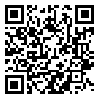Volume 10, Issue 1 (3-2007)
J Arak Uni Med Sci 2007, 10(1): 79-86 |
Back to browse issues page
Download citation:
BibTeX | RIS | EndNote | Medlars | ProCite | Reference Manager | RefWorks
Send citation to:



BibTeX | RIS | EndNote | Medlars | ProCite | Reference Manager | RefWorks
Send citation to:
Sharifi-rad G, Hazavei M M, Hasan- zadeh A, Danesh-amouz A. The effect of health education based on health belief model on preventive actions of smoking in grade one, middle school students. J Arak Uni Med Sci 2007; 10 (1) :79-86
URL: http://jams.arakmu.ac.ir/article-1-52-en.html
URL: http://jams.arakmu.ac.ir/article-1-52-en.html
1- , ebad_sadeki@yahoo.com
Abstract: (34921 Views)
Introduction: World health organization has proclaimed the prevalence of smoking among 15 years old European region students, more than 24 percent. The cigarette smoking indicator in our country among over 15 years old individuals is 11.9 percent and in the province under survey is 15.6 percent. This research has been performed in order to study the effect of health education program based on health belief model (H.B.M) on preventive actions of smoking in middle school students. Materials and Methods: This is a quasi-experimental study, done on 248 students of grade one in middle schools of Boukan city (119 boys and 129 girls) that were randomly divided into experimental and control groups. Data collection tool was a questionnaire including 77 questions based on health belief model (perceived susceptibility, perceived severity, perceived benefits and perceived barriers to smoking, and cues to action) and preventive actions of smoking. After data collection in the first stage, action was taken with regard to educational intervention and then in the second stage (after the intervention), data was collected again. Data was analyzed using T test. Results: Results showed that the mean score of all parts of health belief model in experimental group(except for perceived barriers) after educational intervention compared to before intervention was increased significantly and also the mean score of all parts of HBM after intervention was significantly increased in experimental group compared to control group. Conclusion: The results of this survey show that by increasing the score of health belief model parts including, perceived susceptibility, perceived severity and perceived benefits, adopting preventive actions of smoking also increases. Therefore, the results of this survey confirm the efficiency of health belief model in adopting preventive actions of smoking.
Subject:
General
Received: 2008/09/27
Received: 2008/09/27
Send email to the article author
| Rights and permissions | |
 |
This work is licensed under a Creative Commons Attribution-NonCommercial 4.0 International License. |





